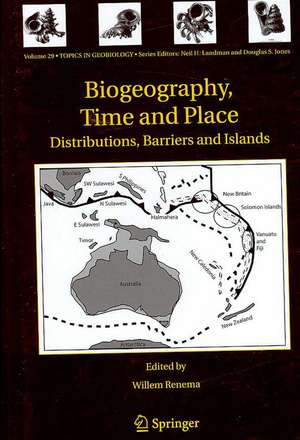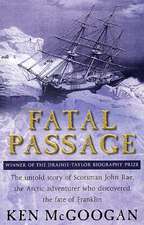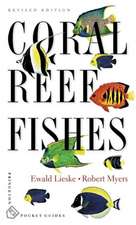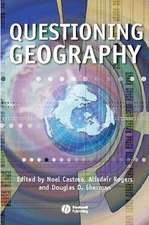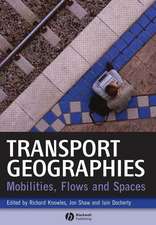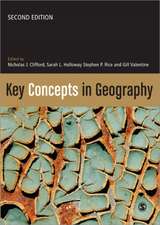Biogeography, Time and Place: Distributions, Barriers and Islands: Topics in Geobiology, cartea 29
Editat de Willem Renemaen Limba Engleză Hardback – 27 sep 2007
| Toate formatele și edițiile | Preț | Express |
|---|---|---|
| Paperback (1) | 950.66 lei 6-8 săpt. | |
| SPRINGER NETHERLANDS – 20 noi 2010 | 950.66 lei 6-8 săpt. | |
| Hardback (1) | 959.50 lei 6-8 săpt. | |
| SPRINGER NETHERLANDS – 27 sep 2007 | 959.50 lei 6-8 săpt. |
Din seria Topics in Geobiology
- 18%
 Preț: 1858.10 lei
Preț: 1858.10 lei - 20%
 Preț: 822.08 lei
Preț: 822.08 lei - 15%
 Preț: 672.43 lei
Preț: 672.43 lei - 18%
 Preț: 1236.82 lei
Preț: 1236.82 lei - 15%
 Preț: 647.59 lei
Preț: 647.59 lei - 24%
 Preț: 885.02 lei
Preț: 885.02 lei - 18%
 Preț: 951.59 lei
Preț: 951.59 lei - 18%
 Preț: 964.23 lei
Preț: 964.23 lei - 18%
 Preț: 1117.69 lei
Preț: 1117.69 lei - 15%
 Preț: 633.31 lei
Preț: 633.31 lei - 18%
 Preț: 966.27 lei
Preț: 966.27 lei - 18%
 Preț: 952.54 lei
Preț: 952.54 lei - 18%
 Preț: 949.85 lei
Preț: 949.85 lei - 18%
 Preț: 1013.50 lei
Preț: 1013.50 lei - 24%
 Preț: 821.17 lei
Preț: 821.17 lei - 18%
 Preț: 952.40 lei
Preț: 952.40 lei - 18%
 Preț: 961.23 lei
Preț: 961.23 lei - 18%
 Preț: 952.26 lei
Preț: 952.26 lei - 18%
 Preț: 960.42 lei
Preț: 960.42 lei - 18%
 Preț: 1843.11 lei
Preț: 1843.11 lei - 18%
 Preț: 954.31 lei
Preț: 954.31 lei - 18%
 Preț: 1256.41 lei
Preț: 1256.41 lei - 15%
 Preț: 673.60 lei
Preț: 673.60 lei - 18%
 Preț: 954.14 lei
Preț: 954.14 lei - 15%
 Preț: 640.06 lei
Preț: 640.06 lei - 18%
 Preț: 959.36 lei
Preț: 959.36 lei
Preț: 959.50 lei
Preț vechi: 1170.12 lei
-18% Nou
Puncte Express: 1439
Preț estimativ în valută:
183.60€ • 192.21$ • 151.92£
183.60€ • 192.21$ • 151.92£
Carte tipărită la comandă
Livrare economică 05-19 aprilie
Preluare comenzi: 021 569.72.76
Specificații
ISBN-13: 9781402063732
ISBN-10: 1402063733
Pagini: 428
Ilustrații: XII, 416 p. 122 illus.
Dimensiuni: 155 x 235 x 22 mm
Greutate: 0.85 kg
Ediția:2007
Editura: SPRINGER NETHERLANDS
Colecția Springer
Seria Topics in Geobiology
Locul publicării:Dordrecht, Netherlands
ISBN-10: 1402063733
Pagini: 428
Ilustrații: XII, 416 p. 122 illus.
Dimensiuni: 155 x 235 x 22 mm
Greutate: 0.85 kg
Ediția:2007
Editura: SPRINGER NETHERLANDS
Colecția Springer
Seria Topics in Geobiology
Locul publicării:Dordrecht, Netherlands
Public țintă
Professional/practitionerCuprins
Global Disjunctions and Flying Insects.- Zoogeography of Freshwater Invertebrates of Southeast Asia, with Special Reference to Odonata.- Distribution and Speciation of Megapodes (Megapodiidae) and Subsequent Development of their Breeding.- The Influence of Land Barriers on the Evolution of Pontoniine Shrimps (Crustacea, Decapoda) Living in Association with Molluscs and Solitary Ascidians.- Delineation of the Indo-Malayan Centre of Maximum Marine Biodiversity: The Coral Triangle.- Fauna Development of Larger Benthic Foraminifera in the Cenozoic of Southeast Asia.- The Role of Spain in the Development of the Reef Brachiopod Faunas During the Carboniferous.- Contrasting Patterns and Mechanisms of Extinction during the Eocene–Oligocene Transition in Jamaica.- Long-Lived Lake Molluscs as Island Faunas: A Bivalve Perspective.- Patterns in Insular Evolution of Mammals: A Key to Island Palaeogeography.- Islands from a Snail's Perspective.- Morphological and Genetical Differentiation of Lizards (Podarcis bocagei and P. hispanica) in the Ria de Arosa Archipelago (Galicia, Spain) resulting from Vicariance and Occasional Dispersal.
Recenzii
From the reviews:
"This volume of the series ‘Topics in Geobiology’ focuses on speciation due to isolation in island-like settings, and the evolution of large-scale diversity as the result of origination, maintenance and extinction. … Biogeography is seen here mainly in the context of paleontology, zoology, plate tectonics, and evolutionary processes resulting in genetic isolation and morphological differentiation on islands. … A fascinating, outstanding and highly recommendable contribution to biogeography." R. Gerstmeier, Entomofauna, Vol. 29 (9), 2008.
"Willem Renema … presents a balanced collection of chapters on a diversity of taxa, aquatic and terrestrial ecosystems, and biogeographic phenomena. … Each chapter is well laid out, following a structural format which is held consistent throughout the book. … this is a rich collection of contributions that provides an eclectic sampling of current research on the responses of ancient biotas to the dynamics of barriers, dispersal routes, and islands. … recommend highly to all scientists interested in the temporal and geographic dynamics of life." Mark V. Lomolino, Journal of Mammal Evolution, Vol. 16, 2009.
"This volume of the series ‘Topics in Geobiology’ focuses on speciation due to isolation in island-like settings, and the evolution of large-scale diversity as the result of origination, maintenance and extinction. … Biogeography is seen here mainly in the context of paleontology, zoology, plate tectonics, and evolutionary processes resulting in genetic isolation and morphological differentiation on islands. … A fascinating, outstanding and highly recommendable contribution to biogeography." R. Gerstmeier, Entomofauna, Vol. 29 (9), 2008.
"Willem Renema … presents a balanced collection of chapters on a diversity of taxa, aquatic and terrestrial ecosystems, and biogeographic phenomena. … Each chapter is well laid out, following a structural format which is held consistent throughout the book. … this is a rich collection of contributions that provides an eclectic sampling of current research on the responses of ancient biotas to the dynamics of barriers, dispersal routes, and islands. … recommend highly to all scientists interested in the temporal and geographic dynamics of life." Mark V. Lomolino, Journal of Mammal Evolution, Vol. 16, 2009.
Notă biografică
Willem Renema:
2002 Ph.D. Free University of Amsterdam
2002- present: Researcher at the National Natural History Museum of the Netherlands.
Dr. Renema is an expert on the (paleo)ecology of large benthic foraminifera in Southeast Asia and the processes leading to the origination and maintenance of high diversity in the Indo-West Pacific.
2002 Ph.D. Free University of Amsterdam
2002- present: Researcher at the National Natural History Museum of the Netherlands.
Dr. Renema is an expert on the (paleo)ecology of large benthic foraminifera in Southeast Asia and the processes leading to the origination and maintenance of high diversity in the Indo-West Pacific.
Caracteristici
Offers exchanges between the fields of paleontology and zoology as patterns of biodiversity have long attracted attention by both biologists and paleontologists Features chapters on the development of (isolated) island faunas, paleogeography and zoomorphology Shows that patterns are not always what they seem if you look at them without a spatial or temporal reference. This cannot be generated without documenting fossil or recent occurrences of taxa
